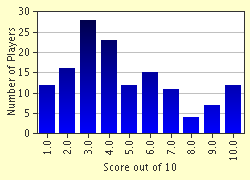Quiz Answer Key and Fun Facts
1. Kenneth I is generally credited as the first king of a united Scotland. Who, however, was the second?
2. Which two early kings are believed to have ruled jointly?
3. Which king was the youngest of eight brothers, ruled for 29 years and was succeeded by his grandson?
4. Which king defeated the Norwegians at the Battle of Largs in 1263?
5. John Balliol was chosen as king of Scots in 1292 by Edward I of England, to whom he promptly swore fealty. For the next few years Edward treated King John with disdain until John finally rebelled and formed an alliance with Edward's great enemy, France. Edward led an army north to deal with his rebellious vassal. At which battle was John defeated?
6. What was the name of John Balliol's son who vied with David II for the Scottish throne.
7. Which Scottish king was murdered after the Battle of Sauchieburn?
8. To which Scottish king was Anne of Denmark married?
9. Following the execution of Charles I in 1649 by the English parliament, Scotland invited his eldest son to take the Scottish throne. Where was Charles II crowned King of Scots in 1651?
10. Which act, passed by the Scottish parliament during the reign of Queen Anne, allowed for Scotland to chose a monarch who was not necessarily the monarch of England also?
Source: Author
alan03
This quiz was reviewed by FunTrivia editor
bloomsby before going online.
Any errors found in FunTrivia content are routinely corrected through our feedback system.


